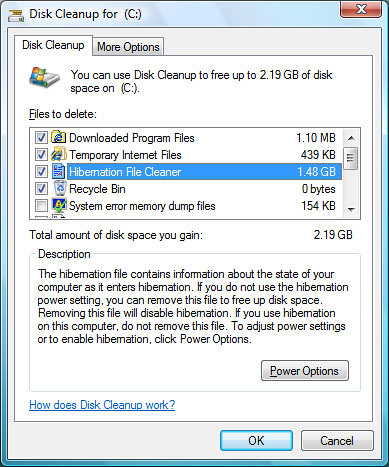
I have found my first bug in the final code of Windows Vista. A few weeks ago after my hard drive was getting low on space I ran disk cleanup to try to delete some unneeded files. Since I needed a lot of space fast I also checked the option to clear my hibernation file. It turns out that was a big mistake.
After clearing my hibernation file my laptops ability to hibernate was destroyed. It was so badly damaged that I could not get to the control panel hibernation settings to turn it back on. Thanks Disk Cleanup!
The fix is actually very easy to do.. Since the control panel settings were gone, I simply used the the command prompt to turn it back on. If you have a similar problem, run the follow command at an administrative level command prompt to turn hibernation back on:
Powercfg /hibernate on
After a reboot the ability to hibernate is restored.
Update: Microsoft now has a KB article on the bug as well.

If you own a Google Chromecast streaming device, you can easily share a browser tab in Chrome browser or even your entire desktop. This can be very useful when presenting from your laptop or if you just want to watch something on a big screen that is only on your PC. The only requirement is you must be on the same network as your Chromecast...
Read More

If you are a fan of minimalist desktop experiences, hiding the desktop icons are an easy way to clean up the Windows interface. Instead of saving everything to your desktop, use the default profile folders such as downloads and documents. Actually hiding all the icons on your desktop is a very simple customization hidden in the right-click context menu. Just right-click on the desktop, select View...
Read More

Google security researchers have published details about a major security flaw found in the SSL protocol that is used to encrypt data transferred between your browser and a web server. SSL is typically used in situations where logon credentials are validated...
Read More

Enabling two-factor authentication is a great way to add an additional level of protection to your Microsoft account. Even if your password is stolen, your account is still protected because two-factor authetication requires an additional level of verification to log in. Microsoft calls their version of two-factor authentication "two-step verification" and it works by providing you with a random code...
Read More



